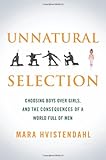Related to http://d.hatena.ne.jp/sumita-m/20141217/1418743281
Anu Anand “India's bride trafficking fuelled by skewed sex ratios“ http://www.theguardian.com/global-development/2014/dec/17/india-bride-trafficking-foeticide
印度、特に北西部では花嫁売買ビジネスが活性化している。その背景には人口における性別バランスの失衡がある。男の子1000人に対して女の子は830人しか生まれてこない*1。 何故女児の出生数が少なくなるのか;
“Among land-owning castes in rural areas, female foeticide is rampant because people bitterly oppose laws which say girls should inherit equally,” said Reena Kukreja*2, who teaches gender studies at Queens University in Ontario, Canada. “So they make sure daughters are never born.”
Nearly 50 years after the introduction of ultrasound technology, which campaigners say has led to the sex-selective termination of up to 10 million healthy female foetuses*3 has identified organised bride trafficking rings increasingly operating in Haryana, Punjab and Uttar Pradesh, where gender ratios are among the least balanced in the country. A 2013 UNODC report (pdf) cites a survey of 92 villages in Haryana which shows that in 10,000 households, 9,000 married women had been bought from poor villages in other states*4.The business of bride trafficking is proving so lucrative that local people are setting themselves up as dealers or brokers, sourcing women for families seeking partners for their sons.
花嫁売買の捜査・取締りの困難。デリーのNGO組織であるSave the Children Movement*6のRakesh Senger氏の話;
Shafiq ur-Rehman is an activist and founder of Empower People*5, a charity that works with trafficked brides in 10 Indian states, including Haryana, where his offices have been set on fire and his employees shot at by locals. He says women who are bought and sold into marriage are often used as unpaid labourers. “It’s simple economics,” he says. “A local day labourer costs $140 for a season. But a girl only costs $100 for life. If it doesn’t work out, she can be resold and there’s no family nearby to help her. It’s no different from the former slave plantations of the US.”
また、
“There’s a very low conviction rate in cases of bride trafficking because the law is so fragmented,” says Rakesh Senger, an activist with the organisation. “One section deals with kidnapping, another with trafficking, another with rape, so cases usually took up to five years to prosecute. There is no inter-state police cooperation either, so it’s difficult to get victims to court to testify. However, with the new rape laws, we’re hopeful things will improve as cases have to be tried within a year.”
これは(本文でも少し触れられているように)超音波による妊娠初期での性別判定というテクノロジーの帰結でもある。これについては、Mara HvistendahlのUnnatural Selection*8をここでもまたマークしておく。
Ravi Kant, president of Shakti Vahini*7, one of India’s most high-profile anti-trafficking organisations, agrees. He says that, despite successfully bringing cases of forced labour – where they have prosecuted families for buying women from another state and forcing them into domestic servitude – they have persistently failed to bring cases of bride trafficking to court.“We’ve tried to prosecute traffickers and men who’ve purchased wives in at least 20 different cases,” Kant says. “They stay in jail for two to three months, get bail and then either the prosecutor doesn’t actively pursue the case, or the victim never testifies because she’s afraid to face her tormentor again. The local police don’t see the accused as having committed any crime, so they don’t investigate properly, and they make no effort to cross state lines to bring victims to court.”

Unnatural Selection: Choosing Boys Over Girls, and the Consequences of a World Full of Men
- 作者: Mara Hvistendahl
- 出版社/メーカー: PublicAffairs
- 発売日: 2011/06/07
- メディア: ハードカバー
- クリック: 2回
- この商品を含むブログ (8件) を見る
*1:C Chandramouli Child Sex Ratio in India http://www.actionaid.org/sites/files/actionaid/child_sex_ratio_-_presentation_by_census_commissioner.pdf
*2:https://ca.linkedin.com/pub/reena-kukreja/73/66/632 See eg. http://www.queensu.ca/cgi-bin/ph?Query=Reena+Kukreja
*3:Randeep Ramesh “Foetuses aborted and dumped secretly as India shuns baby girls” , families in search of wives are increasingly turning to traffickers to counter their sons’ diminishing marriage prospects. There are no official statistics on trafficked and migrant brides in India, but according to a survey conducted across 1,300 villages in Haryana and Rajasthan by Queens University, there has been a 30% increase over the past three years in the numbers of women lured or coerced into marriage. The UN Office of Drugs and Crime (UNODC)((http://www.unodc.org/
*4:UNODC India Country Assessment Report:Current Status of Victim Service Providers and Criminal Justice Acotors on Anti Human Trafficking http://www.unodc.org/documents/southasia/reports/Human_Trafficking-10-05-13.pdf
*5:http://www.empowerpeople.org.in/
*8:Mentioned in http://d.hatena.ne.jp/sumita-m/20120501/1335885805 http://d.hatena.ne.jp/sumita-m/20120704/1341365028 http://d.hatena.ne.jp/sumita-m/20130615/1371261003 http://d.hatena.ne.jp/sumita-m/20131004/1380855220 http://d.hatena.ne.jp/sumita-m/20140711/1405004795